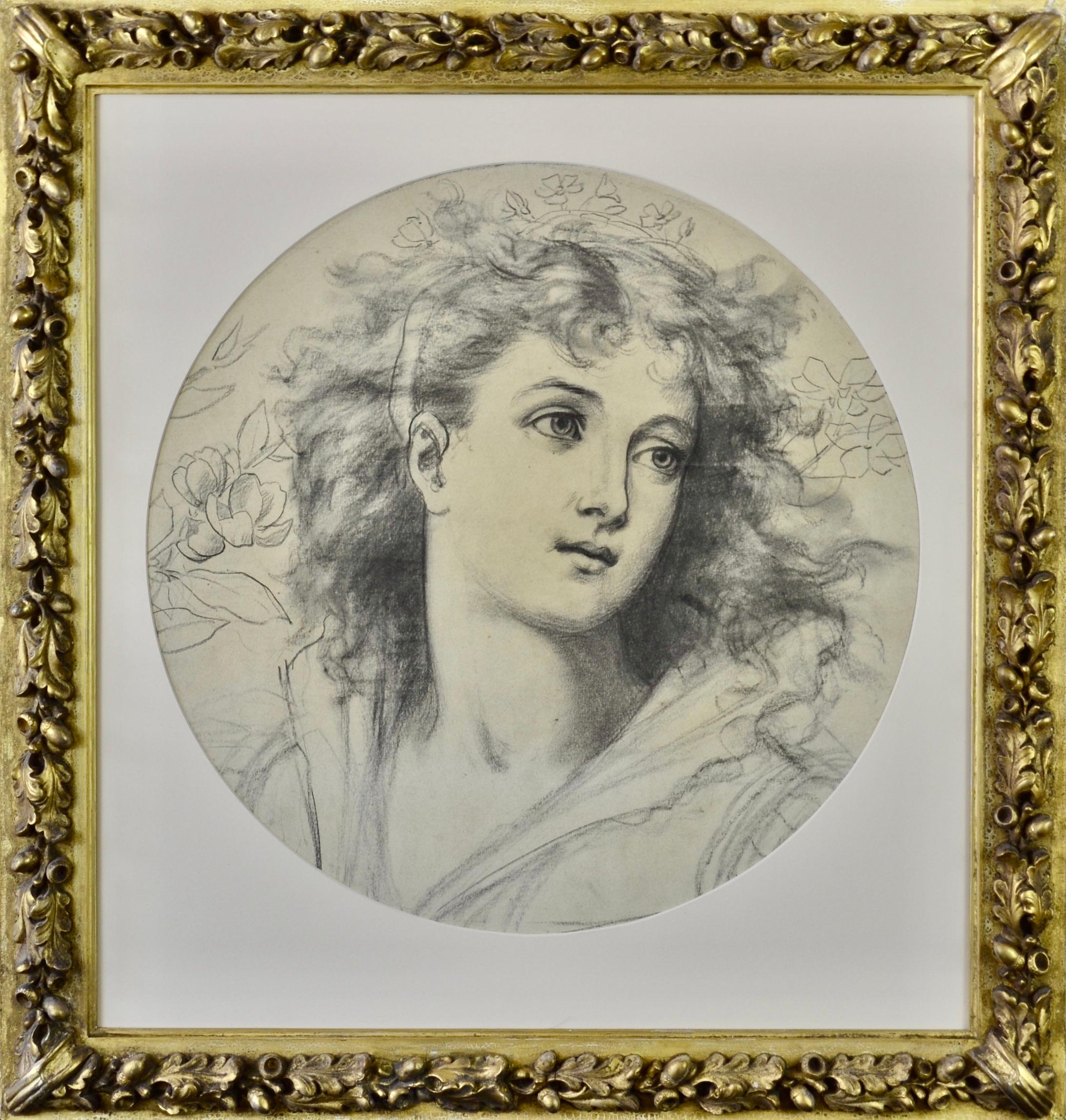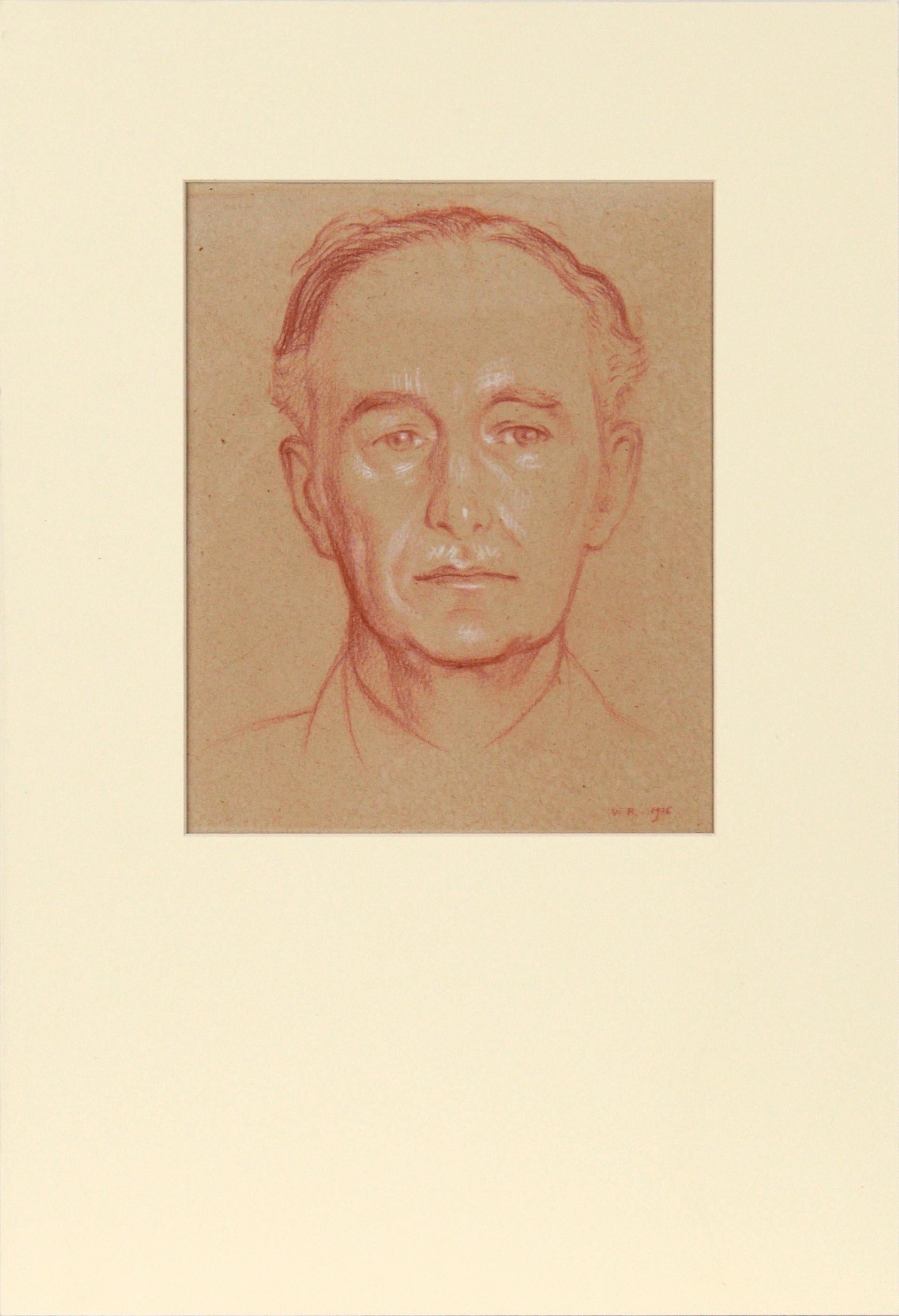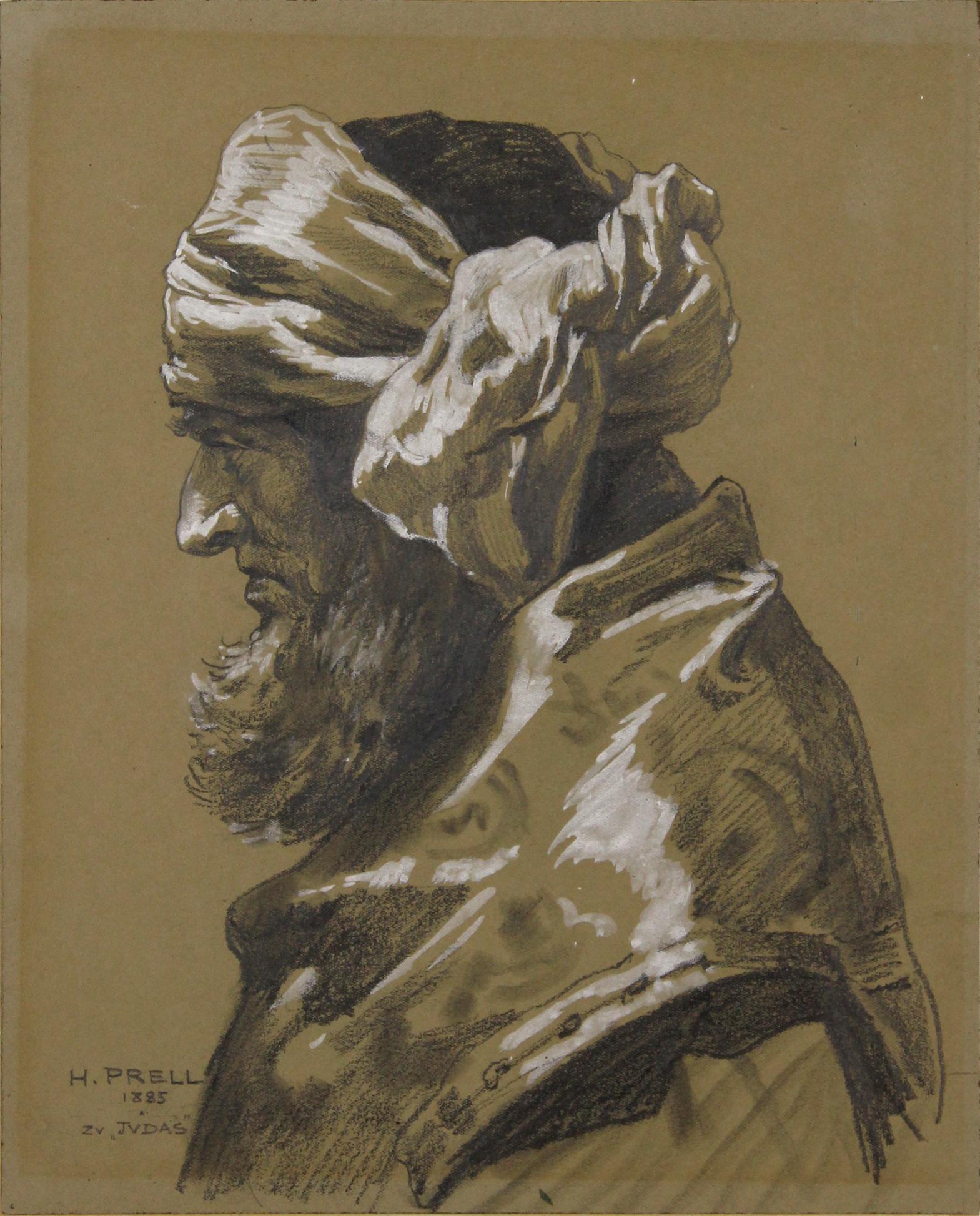Herbert Wilson FosterSummer - Chalk Drawing Design for Minton charger by Herbert Wilson Fostercirca 1872
circa 1872
About the Item
- Creator:Herbert Wilson Foster (1846 - 1929, British)
- Creation Year:circa 1872
- Dimensions:Height: 16.54 in (42 cm)Diameter: 16.54 in (42 cm)
- Medium:
- Movement & Style:
- Period:
- Condition:
- Gallery Location:London, GB
- Reference Number:
Herbert Wilson Foster
Herbert Wilson Foster was born at Endon, Staffordshire on January 18, 1846. His father was a pottery artist and Herbert too worked in the industry as a tile designer for Minton. While at school in Hanley, he won medals for his art work and at the age of 24, won the silver medal at the Worshipful Company of Painter-Stainers. His talent won him a scholarship at South Kensington and he later went on to study in France and Belgium. Foster was a friend of George Heath, the Moorland poet who died at a young age and Foster drew the illustrations for a memorial edition of Heaths’ poems and designed his monument in St. Michael & All Angels Church, Horton. Foster lived at West Bridgford, just outside the city of Nottingham and married Rebecca Fisher from the village of Scarrington, Nottinghamshire. In 1891, Foster became a teacher at Nottingham Trent University, School of Art & Design and at his death in 1929, the principal said of him, "He was one of the most distinguished life masters in the country. He was certainly the best man we have ever had in that time. He was a brilliant student, and an exhibitor at the Royal Academy of Arts." Foster found time to exhibit his work at the Royal Academy of Arts from 1870–1899 these being genre scenes of daily life and his figures feature prominently in his paintings. He exhibited extensively between 1881–1917.

- ShippingRetrieving quote...Ships From: Banbury, United Kingdom
- Return PolicyA return for this item may be initiated within 14 days of delivery.
- Spring - Chalk design drawing for a Minton plaque by Herbert Wilson FosterBy Herbert Wilson FosterLocated in London, GBHERBERT WILSON FOSTER (1846-1929) Spring Inscribed with title beneath the mount Chalk, circular Framed Diameter 42 cm., 16 ½ in. (frame size 61 by 58 cm., 24 by 22 ¾ in.) Herbert Wilson Foster was born in Endon, Staffordshire. He attended Hanley School of Art before continuing his studies in London, Belgium and France. His paintings of rural and domestic subjects were exhibited at the Royal Academy between 1873 and 1899. In 1893 he accepted a teaching position at the Nottingham School of Art, where his pupils included Laura Knight and Harold Knight. Works by him are in the collections of the Minton archives; the Wisbech & Fenland Museum; Leicester Art Gallery; Rushcliffe Council and Nottingham Castle Museum. In addition to his work as a painter he worked as a porcelain painter, working at one point on the tile panels in the Victoria & Albert Museum. He is known to have worked at Mintons from 1872 where he specialized in portraits of contemporary personalities, including members of the Royal Family. This head of a girl was probably intended for a painted ceramic wall charger...Category
1870s Realist Figurative Drawings and Watercolors
MaterialsPencil, Chalk
- Reverie - Early 20th Century British chalk drawing of a girl by H J HarveyBy Herbert Johnson HarveyLocated in London, GBHERBERT JOHNSON HARVEY (British 1883-1956) Reverie Signed with monogram and dated l.l.: HJ 09 Red chalks Framed 29.5 by 22 cm., 11 ¾ by 8 ¾ in. (fra...Category
Early 20th Century Realist Portrait Drawings and Watercolors
MaterialsChalk
- The Plain Gangster - Early 20th Century British Illustration by Rex WhistlerLocated in London, GBREX JOHN WHISTLER (British 1905-1944) The Plain Gangster Inscribed with title Pen, brush and ink Framed 20 by 16.5 cm., 8 by 10 ½ in. (frame size 39 b...Category
Early 20th Century Realist Portrait Drawings and Watercolors
MaterialsInk
- Portrait of Archibald Hartrick - 1884 chalk drawing by Frank Lewis EmanuelLocated in London, GBFRANK LEWIS EMANUEL (1865-1948) Portrait of Archibald Hartrick Signed, inscribed and dated l.l.: A S HARTRICK (artist) by F L EMANUEL 1884 Black chalk heightened with white chalk on blue paper...Category
1880s Realist Portrait Drawings and Watercolors
MaterialsChalk
- Monument to Denzil Holles, Dorchester - 1950s drawing by British ArtistBy Neville HickmanLocated in London, GBNEVILLE HICKMAN (20th Century) Monument to Denzil Holles, Dorchester Signed, inscribed and dated: Holles Monument, St Peter’s Church, Dorchester, 16 April 1958. Chalks heightened ...Category
1950s Realist Still-life Drawings and Watercolors
MaterialsChalk
- Girl in a Sari - 20th Century pencil drawing by Carolyn SergeantLocated in London, GBCAROLYN SERGEANT (1937-2018) Girl in Sari Signed on the reverse and inscribed: Set of six Drawings of a Figure from the Life - Finals Pencil and...Category
1960s Realist Figurative Drawings and Watercolors
MaterialsPencil, Chalk
- Untitled (Man Reclining on Tile Floor)By Mark BeardLocated in New York, NYGraphite and conté crayon on paper Signed and dated, l.r. This artwork is offered by ClampArt, located in New York City. Mark Beard, born in 1956 in Salt Lake City, now lives in Ne...Category
1970s Realist Figurative Drawings and Watercolors
MaterialsPaper, Graphite, Conté
- Portrait of Leopold Myers by Sir William RothensteinBy Sir William RothensteinLocated in Soquel, CAStately sanguine portrait of Leopold Hamilton Myers (Novelist) by Sir William Rothenstein (English, 1872-1945). Captured in Rothenstein's characteristic style, Myers looks directly at the viewer with a neutral expression. Although this portrait uses only two colors and minimal shading, the likeness of Myers is incredibly well captured. Leo (Leopold) Hamilton Myers (1881 – 1944) was a British novelist. Numerous examples like this one of the writer are in the Tate Museum. Initialed and dated in the lower right corner ("W.R. 1936") Inscription on verso indicating materials, subject, and artist. Presented in a new cream colored mat with foamcore backing. Mat size: 18"H x 12"W Paper size: 15.25"H x 10.75"W William Rothenstein (English, 1872-1945) was born into a German-Jewish family in Bradford, West Yorkshire. His father, Moritz, emigrated from Germany in 1859 to work in Bradford's burgeoning textile industry. Soon afterwards he married Bertha Dux, and they had six children, of which William was the fifth. Rothenstein was knighted in 1931. Rothenstein left Bradford Grammar School at the age of sixteen to study at the Slade School of Art*, London (1888-1893), where he was taught by Alphonse Legros, and the Académie Julian* in Paris (1889-1893), where he met and was encouraged by James McNeill Whistler, Edgar Degas and Henri Toulouse-Lautrec. Whilst in Paris he also befriended the Anglo-Australian artist Charles Conder, with whom he shared a studio in Montmartre. In 1893 he returned to England to work on "Oxford Characters" a series of lithographic* portraits. In Oxford he met and became a close friend of the caricaturist* and parodist Max Beerbohm, who later immortalised him in the short story Enoch Soames (1919). During the 1890s Rothenstein exhibited with the New English Art Club* and, in 1900, won a silver medal for his painting The Doll's House at the Exposition Universelle. In 1898 he co-founded the Carfax Gallery in St. James' Piccadilly with John Fothergill. During its early years the gallery was closely associated with such artists as Charles Conder, Philip Wilson Steer, Charles Ricketts and Augustus John. It also exhibited the work of Auguste Rodin, whose growing reputation in England owed much to Rothenstein's friendship and missionary zeal. The gallery was later the home for all three exhibitions of The Camden Town Group*, led by Rothenstein's friend and close contemporary Walter Sickert. Rothenstein is best known for his portrait drawings of famous individuals and for being an official war artist in both World War I and World War II. He was also a member of the International Society of Sculptors, Painters & Gravers. The style and subject of his paintings varies, though certain themes reappear, in particular an interest in 'weighty' or 'essential' subjects tackled in a restrained manner. Good examples include Parting at Morning (1891), Mother and Child (1903) and Jews Mourning at a Synagogue (1907) - all of which are owned by the Tate Gallery. The National Portrait Gallery owns over two hundred of his portraits. In 2011 the BBC and the Public Catalogue Foundation began cataloguing all of his paintings in public ownership online. Between 1902 and 1912 Rothenstein lived in Hampstead, London, where his social circle included such names as H.G.Wells, Joseph Conrad and the artist Augustus John. Amongst the young artists to visit Rothenstein in Hampstead were Mark Gertler...Category
1930s Realist Portrait Drawings and Watercolors
MaterialsConté, Handmade Paper
- Sketch of a head - Carved in stone -Located in Berlin, DEEmil Faesch (1865 Basel - 1915 Basel). Sketch of a head. Charcoal on painting cardboard, 60 x 47.5 cm (folio size), signed and dated at lower right "E. Faesch. 1888.". Minor browning. - Carved in stone - About the artwork The life-size head has an immensely present presence. This effect is due to the fact that Faesch took his cue from academic classical...Category
1880s Realist Figurative Drawings and Watercolors
MaterialsChalk
- Half-length portrait of a Pharisee - In the shadow of betrayal -Located in Berlin, DEHermann Prell (1854 Leipzig - 1922 Dresden-Loschwitz). Half-length portrait of a Pharisee, 1885. Sketch for the right-hand figure in the painting Judas Iscariot, 1886. Pencil drawing heightened with opaque white and black chalk on beige-grey wove paper (papier vélin), 34 x 27.8 cm (visible size), 52 x 45 cm (mount), signed, dated and inscribed "H. PRELL 1885 zu 'Judas'". Minor browning, collection stamp on the reverse. - In the shadow of betrayal - About the artwork This painting is the sketch for the head of the Pharisee offering the coins to Judas in one of Herrmann Prell's major works, the painting Betrayal of Judas, completed in 1886. The painting belongs to the Staatliche Kunstsammlungen Dresden and is illustrated in Adolf Rosenberg: Prell, Bielefeld and Leipzig 1901, p. 21 (Fig. 19). It is especially highlighted in Thieme-Becker (vol. 27, p. 376). Hermann Prell, Betrayal of Judas, 1886 The monumental head, which fills the picture and is distinguished by its ornamented robe, is almost a lost profile, which in the executed painting is justified by the Pharisee's turning towards Judas. Despite the fact that the sitter withdraws from the viewer by turning away, it was necessary to artistically elaborate the motivation for the purchase of one of Christ's disciples, which is why the drawing focuses on the expression of the face, while the 'accessories' are treated in a more summary manner. In characterising the face, Hermann Prell performs a balancing act: since the Pharisee, despite his destructive actions, is an actor in the history of salvation, the head must show a dignity appropriate to the event, but at the same time the physiognomy must also bear witness to the scheming attitude that led to the betrayal. To solve this dilemma, Prell draws on the traditional depictions of the heads of the apostles, shading the face to indicate the obdurate darkness of the spirit and moving the base of the nose slightly upwards while the mouth falls away, thus giving a physiognomic expression to the motivation of the action. The fatal drama of the betrayal is expressed in the monumentalisation of the head and in the thunderous white highlights that contrast with the darkness of the chalk. As a study, considered by the artist to be a work in itself, this drawing reveals the pictorial problems and brainstorming of monumental painting. About the artist In 1872 Prell, who was one of the most important exponents of monumental painting of his time, began studying painting with Theodor Grosse at the Dresden Academy of Art and continued with Carl Gussow at the Berlin Academy in 1876. Hans von Marées taught him in Rome in 1878. More influential on his work, however, were Arnold Böcklin and Max Klinger, with whom Prell had been friends since his student days and with whom he worked together on several occasions. Prell's first major work, which established his reputation as a monumental painter, were the frescoes in the banqueting hall of the Architektenhaus in Berlin in 1881/82, commissioned by the state and depicting the different periods of architecture. Prell then went to Italy for two years to study fresco painting. Other major commissions followed. These included monumental frescoes in the town halls of Worms (1884), Hildesheim (1882-92), Gdansk (1895) and Dresden, the staircase of the Silesian Museum of Fine Arts in Breslau (1893/94), the throne room of the German Embassy in Rome (1896-99) and the staircase of the Albertinum in Dresden (1900-1904). From 1886 Prell taught at the academy of arts in Berlin and in 1892 he was appointed professor at the academy of arts in Dresden. His students included Osmar Schindler and Hans Unger...Category
1880s Realist Figurative Drawings and Watercolors
MaterialsChalk
- Two MenBy Mark BeardLocated in New York, NYCharcoal with red and white conté crayon on Rives BFK paper Signed in pencil, l.l. This artwork is offered by ClampArt, located in New York City. Mark Beard, born in 1956 in Salt L...Category
21st Century and Contemporary Realist Figurative Drawings and Watercolors
MaterialsConté, Paper, Charcoal
- Untitled (Man Reading Newspaper)By Mark BeardLocated in New York, NYConté crayon on paper Signed, l.r. This artwork is offered by ClampArt, located in New York City. Mark Beard, born in 1956 in Salt Lake City, now lives in New York City. His works ...Category
1970s Realist Figurative Drawings and Watercolors
MaterialsConté, Paper






